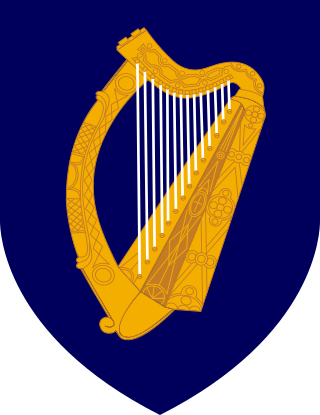Related Research Articles
A statute of limitations, known in civil law systems as a prescriptive period, is a law passed by a legislative body to set the maximum time after an event within which legal proceedings may be initiated. In most jurisdictions, such periods exist for both criminal law and civil law such as contract law and property law, though often under different names and with varying details.

Defamation is a communication that injures a third party's reputation and causes a legally redressable injury. The precise legal definition of defamation varies from country to country. It is not necessarily restricted to making assertions that are falsifiable, and can extend to concepts that are more abstract than reputation – like dignity and honour. In the English-speaking world, the law of defamation traditionally distinguishes between libel and slander. It is treated as a civil wrong, as a criminal offence, or both.
A tort is a civil wrong, other than breach of contract, that causes a claimant to suffer loss or harm, resulting in legal liability for the person who commits the tortious act. Tort law can be contrasted with criminal law, which deals with criminal wrongs that are punishable by the state. While criminal law aims to punish individuals who commit crimes, tort law aims to compensate individuals who suffer harm as a result of the actions of others. Some wrongful acts, such as assault and battery, can result in both a civil lawsuit and a criminal prosecution in countries where the civil and criminal legal systems are separate. Tort law may also be contrasted with contract law, which provides civil remedies after breach of a duty that arises from a contract. Obligations in both tort and criminal law are more fundamental and are imposed regardless of whether the parties have a contract.
In a legal dispute, one party has the burden of proof to show that they are correct, while the other party has no such burden and is presumed to be correct. The burden of proof requires a party to produce evidence to establish the truth of facts needed to satisfy all the required legal elements of the dispute.
Delict is a term in civil and mixed law jurisdictions whose exact meaning varies from jurisdiction to jurisdiction but is always centered on the notion of wrongful conduct.
A citizen's arrest is an arrest made by a private citizen – a person who is not acting as a sworn law-enforcement official. In common law jurisdictions, the practice dates back to medieval England and the English common law, in which sheriffs encouraged ordinary citizens to help apprehend law breakers.
In English criminal law, public nuisance is a act, condition or thing that is illegal because it interferes with the rights of the general public.

Personal injury is a legal term for an injury to the body, mind, or emotions, as opposed to an injury to property. In common law jurisdictions the term is most commonly used to refer to a type of tort lawsuit in which the person bringing the suit has suffered harm to their body or mind. Personal injury lawsuits are filed against the person or entity that caused the harm through negligence, gross negligence, reckless conduct, or intentional misconduct, and in some cases on the basis of strict liability. Different jurisdictions describe the damages in different ways, but damages typically include the injured person's medical bills, pain and suffering, and diminished quality of life.

The Offences against the Person Act 1861 is an Act of the Parliament of the United Kingdom of Great Britain and Ireland. It consolidated provisions related to offences against the person from a number of earlier statutes into a single Act. For the most part these provisions were, according to the draftsman of the Act, incorporated with little or no variation in their phraseology. It is one of a group of Acts sometimes referred to as the Criminal Law Consolidation Acts 1861. It was passed with the object of simplifying the law. It is essentially a revised version of an earlier consolidation act, the Offences Against the Person Act 1828, incorporating subsequent statutes.
In criminal law and in the law of tort, recklessness may be defined as the state of mind where a person deliberately and unjustifiably pursues a course of action while consciously disregarding any risks flowing from such action. Recklessness is less culpable than malice, but is more blameworthy than carelessness.

Canadian tort law is composed of two parallel systems: a common law framework outside Québec and a civil law framework within Québec, making the law system is bijural, as it is used throughout Canadian provinces except for Québec, which uses private law. In nine of Canada's ten provinces and three territories, tort law originally derives that of England and Wales but has developed distinctly since Canadian Confederation in 1867 and has been influenced by jurisprudence in other common law jurisdictions. As most aspects of tort law in Canada are the subject of provincial jurisdiction under the Canadian Constitution, tort law varies even between the country's common law provinces and territories.
In the English law of homicide, manslaughter is a less serious offence than murder, the differential being between levels of fault based on the mens rea or by reason of a partial defence. In England and Wales, a common practice is to prefer a charge of murder, with the judge or defence able to introduce manslaughter as an option. The jury then decides whether the defendant is guilty or not guilty of either murder or manslaughter. On conviction for manslaughter, sentencing is at the judge's discretion, whereas a sentence of life imprisonment is mandatory on conviction for murder. Manslaughter may be either voluntary or involuntary, depending on whether the accused has the required mens rea for murder.

The New Zealand Bill of Rights Act 1990 is a statute of the Parliament of New Zealand part of New Zealand's uncodified constitution that sets out the rights and fundamental freedoms of anyone subject to New Zealand law as a bill of rights, and imposes a legal requirement on the attorney-general to provide a report to parliament whenever a bill is inconsistent with the Bill of Rights.

The Limitation Act 1980 is an act of the Parliament of the United Kingdom applicable only to England and Wales. It is a statute of limitations which provides timescales within which action may be taken for breaches of the law. For example, it provides that breaches of an ordinary contract are actionable for six years after the event whereas breaches of a deed are actionable for twelve years after the event. In most cases, after the expiry of the time periods specified in the act the remedies available for breaches are extinguished and no action may be taken in the courts in respect of those breaches.
Modern libel and slander laws in many countries are originally descended from English defamation law. The history of defamation law in England is somewhat obscure; civil actions for damages seem to have been relatively frequent as far back as the Statute of Gloucester in the reign of Edward I (1272–1307). The law of libel emerged during the reign of James I (1603–1625) under Attorney General Edward Coke who started a series of libel prosecutions. Scholars frequently attribute strict English defamation law to James I's outlawing of duelling. From that time, both the criminal and civil remedies have been found in full operation.
In Ireland, "publication or utterance of blasphemous matter", defamatory of any religion, was a criminal offence until 17 January 2020. It was a requirement of the 1937 Constitution until removed after a 2018 referendum. The common law offence of blasphemous libel, applicable only to Christianity and last prosecuted in 1855, was believed to fulfil the constitutional requirement until a 1999 ruling that it was incompatible with the constitution's guarantee of religious equality. The Defamation Act 2009 included a provision intended to fill the lacuna while being "virtually impossible" to enforce, and no prosecution was made under it. The 2009 statute increased controversy, with proponents of freedom of speech and freedom of religion arguing for amending the constitution. After the 2018 constitutional amendment, a separate bill to repeal the 2009 provision and residual references to blasphemy was enacted in 2019 by the Oireachtas (parliament) and came into force in 2020. The Prohibition of Incitement to Hatred Act 1989, which includes religion among the characteristics protected from incitement to hatred, remains in force.

The Libel Act 1843, commonly known as Lord Campbell's Libel Act, was an Act of the Parliament of the United Kingdom. It enacted several important codifications of and modifications to the common law tort of libel.

Tort law in India is primarily governed by judicial precedent as in other common law jurisdictions, supplemented by statutes governing damages, civil procedure, and codifying common law torts. As in other common law jurisdictions, a tort is breach of a non-contractual duty which has caused damage to the plaintiff giving rise to a civil cause of action and for which remedy is available. If a remedy does not exist, a tort has not been committed since the rationale of tort law is to provide a remedy to the person who has been wronged.
In the United Kingdom, there are time limits after which court actions cannot be taken in certain types of cases. These differ across the three legal systems in the United Kingdom. The United Kingdom has no statute of limitations for any criminal offence tried above magistrate level.

Gough v Neary & Cronin [2003] IESC 39; [2003] IR 92; [2004] 1 ILRM 35 is an Irish Supreme Court case in which the court ruled that a claim against a gynecologist for performing an unnecessary hysterectomy was no longer legally enforceable owing to a prescribed period of limitation having lapsed under the Statute of Limitations (Amendment) Act 1991. However, the claim could still be brought under tort; this case highlighted that the three year limit for personal injury starts when the individual realizes the injury was due to negligence, rather than the date of the occurrence of the injury. Thus, the period that a person could file a claim was, in practical terms, extended.
References
- ↑ Bar Review Institution of Proceedings the Statute of Limitations
- ↑ "Section 7 of the Criminal Justice Act 1951".
- ↑ "Time limitations for the commencement of criminal proceedings".
- ↑ "Injury Claims Statute of Limitations".
- ↑ "Children's Injury Claims".
- ↑ Devlin -v- Roche & ors (2002) IESC 34
- ↑ Defamation Act 2009, Section 38